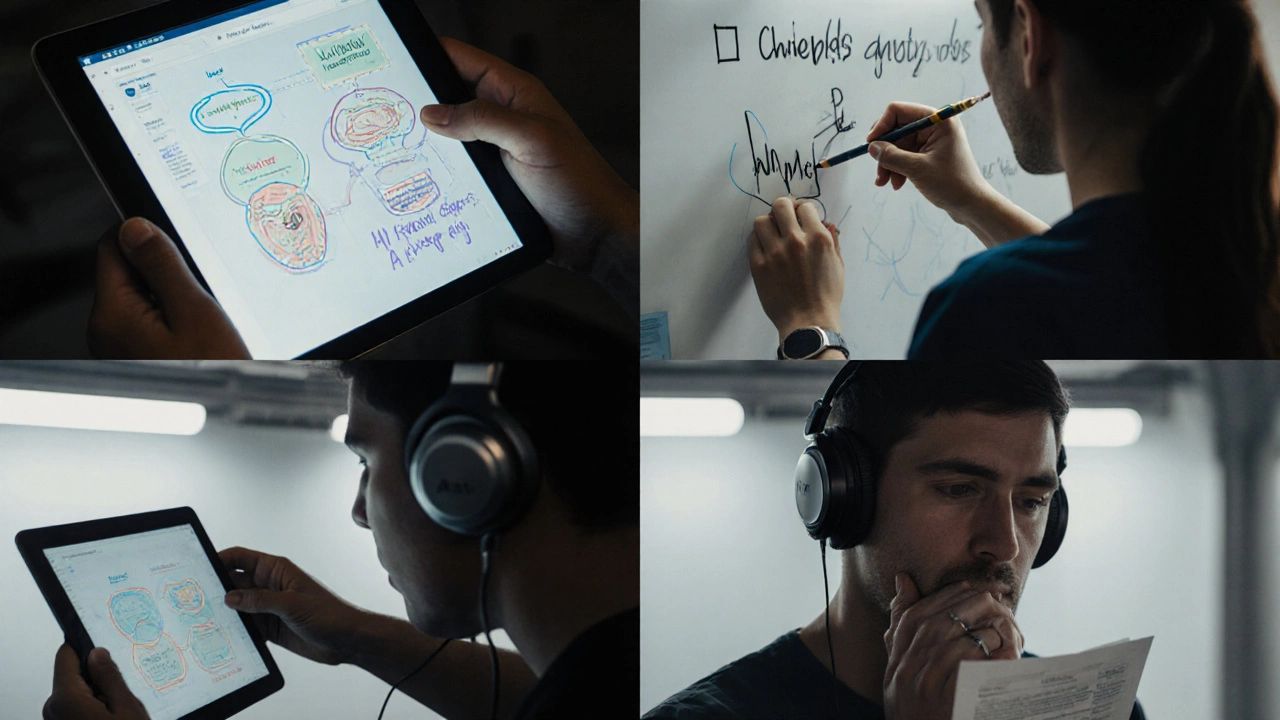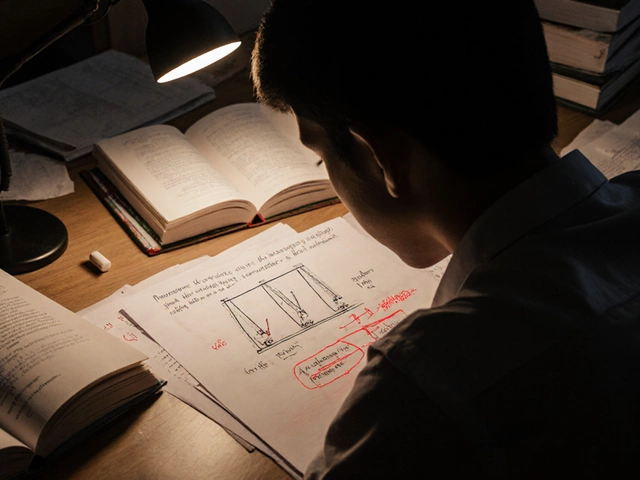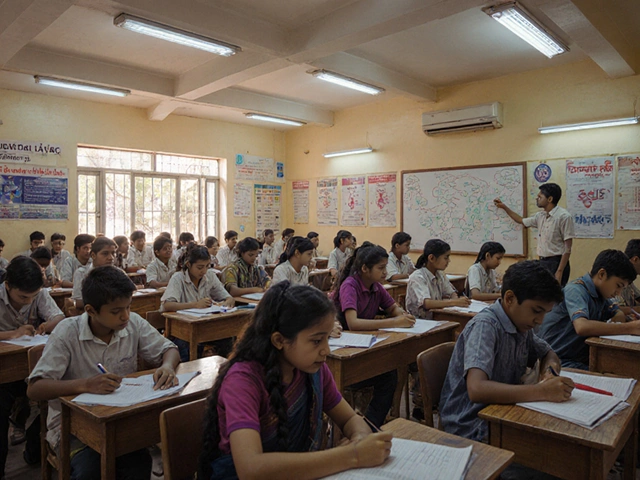USMLE Step 1 Study Planner
Create Your Personalized Study Plan
Get a tailored schedule based on your available time and preparation needs
Your Study Plan
65% of recommended study time completed
Total Study Hours
320 hours
Recommended Daily Hours
10 hours
Tip: You're studying 10 hours daily. Consider adding a 1-hour break between study blocks to prevent burnout.
Sample Daily Schedule
Key Recommendations
- Dedicate 30% of your time to reviewing incorrect answers
- Take a full day off each week - no studying, just rest
- Focus on high-yield topics: 60% of questions cover cardiovascular, renal, infectious disease, neurology, and pharmacology
- Practice skipping questions you're stuck on - use the flag function
The USMLE Step 1 isn’t just another test. It’s the gatekeeper to becoming a doctor in the United States-and for many, the most brutal exam they’ll ever take. Every year, over 30,000 medical students from around the world sit for it. Only about 95% pass. That sounds high-until you realize what’s at stake. Your entire medical career hinges on this one three-day exam. A low score can shut doors to top residency programs, force you to retake it months later, or even end your dream of practicing in the U.S.
What Exactly Is the USMLE Step 1?
The United States Medical Licensing Examination (USMLE) Step 1 is the first of three exams required to get a medical license in the U.S. It’s taken after the second year of medical school, right after students finish their basic science coursework. The test doesn’t ask you to recall facts-it tests how well you can apply them. You’re not just memorizing the Krebs cycle; you’re diagnosing a patient based on lab results, imaging, and symptoms, all while under time pressure.
The exam lasts eight hours. You’ll answer 280 multiple-choice questions divided into seven 40-question blocks. Each block gives you 60 minutes. That’s less than 15 seconds per question on average. And the questions? They’re dense. One might give you a 45-year-old man with chest pain, a family history of heart disease, elevated troponin, and an ECG showing ST elevation-and then ask you which drug is contraindicated. No context. No hand-holding. Just data. And you have to pick the right answer from four options, one of which is designed to look tempting but is dangerously wrong.
Why Is It So Hard?
The difficulty isn’t just in the volume-it’s in the depth and integration. Unlike exams in other countries that focus on rote memorization, Step 1 demands you connect biochemistry to pathology, pharmacology to physiology, and microbiology to clinical presentation. You need to know that a patient with a rash and joint pain after a tick bite might have Lyme disease, and that the first-line treatment is doxycycline, not penicillin. You need to understand why a diabetic patient on metformin who develops lactic acidosis after contrast dye is at risk for renal failure.
There’s no single textbook that covers everything. Students use at least five major resources: First Aid for the USMLE Step 1, Pathoma, SketchyMedical, UWorld, and Kaplan notes. Most students spend 4 to 8 weeks studying full-time, often treating the exam like a second job. Some study 12 hours a day, six days a week. Sleep becomes a luxury. Social life? Gone. The mental toll is real.
And then there’s the scoring. In 2022, the USMLE changed Step 1 from a three-digit score (like 245) to a simple Pass/Fail system. On the surface, that sounds easier. But it didn’t make the exam easier-it just shifted the pressure. Now, residency programs rely even more heavily on Step 2 CK scores, research, letters of recommendation, and clinical rotations. That means students feel even more pressure to crush Step 2 CK, because Step 1 no longer differentiates them. The bar didn’t drop-it just moved.
How Does It Compare to Other Tough Exams?
People often compare Step 1 to India’s NEET or China’s Gaokao. Those are brutal, but they’re more about volume and speed. NEET tests 200 questions in 3 hours. Gaokao lasts two days with dozens of subjects. Step 1 is different. It’s not about how much you know-it’s about how accurately you can use what you know under pressure.
Even the bar exam for lawyers isn’t quite the same. The bar tests legal knowledge and application, but it’s not built on years of memorizing human anatomy, pharmacokinetics, and immunology. Medical school is one of the most information-dense degrees on the planet. Step 1 is the first real test of whether you can handle that.
Some say the CPA exam is harder. But CPA candidates can retake individual sections. Step 1 is a one-shot deal. If you fail, you can’t retake it for 60 days. And you’re limited to four attempts total. One failure can cost you a year.

What Happens When You Fail?
Failing Step 1 is not just a setback-it’s a crisis. Many international medical graduates (IMGs) who fail are forced to leave the U.S. and return home. Some spend a year studying again, then reapply to residency programs with a failure on their record. Residency programs often screen out applicants with a failed Step 1, even if they later pass. The stigma sticks.
Even for U.S. medical students, failing means delaying graduation, losing momentum, and facing questions from family and peers. The emotional weight is crushing. One student told me she cried for three days after her score came back. She had studied 10 hours a day for six months. She didn’t fail because she didn’t know the material. She failed because she ran out of time on the last block and guessed on 30 questions.
How Do People Prepare?
There’s no magic formula, but the most successful students follow a few proven patterns:
- They use UWorld religiously. It’s not just a question bank-it’s a learning tool. Most top scorers do UWorld at least twice, reviewing every explanation, even for questions they got right.
- They build a daily routine. Study blocks, timed practice, and scheduled breaks aren’t optional. They’re survival tactics.
- They avoid burnout by scheduling one day off a week. No studying. No flashcards. Just walking, music, or talking to someone who doesn’t care about potassium levels.
- They focus on weak areas early. If you struggle with microbiology, you don’t wait until the last month to fix it.
Some students pay for expensive prep courses. Others rely on free YouTube channels like Ninja Nerd or Osmosis. The key isn’t the resource-it’s consistency. One student from Nigeria passed with a high score using only First Aid and free Anki decks he built himself. He studied on his phone during bus rides between shifts at the hospital.

Is There a Way to Make It Easier?
No. But you can make it less overwhelming. The biggest mistake students make is trying to learn everything. You can’t. No one can. The exam is designed to test judgment, not omniscience. Focus on high-yield topics: cardiovascular, renal, infectious disease, neurology, and pharmacology. These make up nearly 60% of the test.
Practice time management. Learn to skip questions you’re stuck on and come back later. Use the flag function. Don’t waste 10 minutes on one question when you could answer five others and return with fresh eyes.
And most importantly-don’t compare yourself to others. You’re not competing against the person who scored 270. You’re competing against the version of yourself that showed up yesterday. Progress, not perfection, is the goal.
What Comes After Step 1?
Step 1 is just the beginning. After it comes Step 2 CK (Clinical Knowledge), which tests your ability to manage patients in real-world settings. Then Step 2 CS (Clinical Skills), which was discontinued in 2021 but replaced by other assessments. Finally, Step 3, taken during your first year of residency, tests whether you can practice independently.
Each step is harder than the last. But Step 1 is the one that breaks people. It’s the filter. The moment you realize that being smart isn’t enough-you have to be relentless, organized, and emotionally resilient.
Final Thoughts
The USMLE Step 1 isn’t the hardest exam in the world by raw difficulty. But it’s the most consequential. It doesn’t just test knowledge-it tests your will. It asks: Can you carry this weight for eight hours? Can you stay focused when your eyes are tired and your mind is foggy? Can you trust yourself when the stakes are life and death?
If you’re preparing for it, know this: you’re not alone. Thousands before you have sat where you are now. Some passed. Some didn’t. But those who made it didn’t do it because they were the smartest. They did it because they showed up-every day-even when they didn’t feel like it.
Is the USMLE Step 1 the hardest exam in the U.S.?
Yes, among professional licensing exams, the USMLE Step 1 is widely considered the toughest. It’s not just the volume of material-it’s the depth of integration required. Unlike bar exams or CPA exams, it demands mastery of complex scientific concepts applied under extreme time pressure. No other U.S. licensing exam requires this level of multidisciplinary knowledge under such high stakes.
Can you pass the USMLE Step 1 without studying?
No. Even top medical students who aced their pre-clinical courses still need months of dedicated preparation. The exam doesn’t test what you learned in class-it tests how well you can apply it in unfamiliar clinical scenarios. Without focused study using resources like UWorld and First Aid, passing is extremely unlikely.
What is the pass rate for the USMLE Step 1?
As of 2025, the pass rate for U.S. medical school graduates is about 96%. For international medical graduates, it’s around 75%. These numbers reflect the high level of preparation among U.S. students and the added challenges faced by IMGs, including language barriers and differences in medical education systems.
Has the USMLE Step 1 become easier since it went Pass/Fail?
No. The change to Pass/Fail in 2022 removed the numerical score, but the exam content and difficulty level stayed the same. In fact, many students feel more pressure now because residency programs use Step 2 CK scores and other factors more heavily to differentiate applicants. The bar didn’t drop-it just moved.
How long should I study for the USMLE Step 1?
Most successful students study for 6 to 8 weeks full-time, dedicating 8 to 12 hours per day. If you’re studying part-time while working or doing rotations, plan for 3 to 6 months. The key isn’t the number of hours-it’s consistency, active recall, and reviewing explanations for every question you get wrong.
What’s the best resource for USMLE Step 1 prep?
UWorld is the most widely recommended question bank. It’s not just about answering questions-it’s about understanding why each answer is right or wrong. First Aid for the USMLE Step 1 is the standard review book. Pathoma and SketchyMedical are top choices for pathology and microbiology. Many students combine these with Anki flashcards for spaced repetition.
Can you retake the USMLE Step 1 if you fail?
Yes, but with strict limits. You can retake Step 1 up to four times total. After a failure, you must wait at least 60 days before retesting. If you fail a third time, you must wait six months before the fourth attempt. Each failure makes residency applications significantly harder.
Do you need to be a U.S. citizen to take the USMLE Step 1?
No. International medical graduates (IMGs) from accredited schools worldwide can register and take the exam. They must apply through the ECFMG (Educational Commission for Foreign Medical Graduates) and meet additional documentation requirements, including English proficiency and verification of their medical degree.




